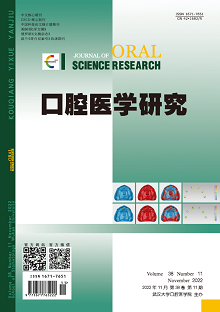|
|
Effects of Dental Pulp Fibroblasts Endoplasmic Reticulum Stress in Pulpitis
LI Dan, ZHANG Qi
2022, 38(11):
1064-1070.
DOI: 10.13701/j.cnki.kqyxyj.2022.11.013
Objective: To explore the occurrence and effects of endoplasmic reticulum stress (ERS) in pulpitis and on inflammatory factor of human dental pulp fibroblasts (hDPFs). Methods: Rats were used to construct the pulpitis models. The samples were collected at 0, 6, 12, 24, and 48 hours. Hematoxylin-eosin staining was used to observe the inflammatory infiltration. The mRNA expression levels of ERS and inflammatory factors were detected by RT-qPCR. HDPFs were cultured in vitro and divided into control group, 4-phenylbutyric acid (4-PBA) group, LPS group, and LPS+4-PBA group. The samples were collected at 1 d. Endoplasmic reticulum morphology was observed by transmission electron microscopy. The expression of ERS markers proteins were detected by immunofluorescence. The mRNA expression of ERS makers and inflammatory factors were detected by RT-qPCR. 4-PBA was used in the pulp cavity for "rescue", and samples were collected at 1, 3, and 7 d. Results: With increased exposure time, the inflammatory infiltration of pulp tissue increased, and the mRNA expressions of TNF-α, IL-1β, IL-6, GRP78, CHOP, and XBP1 increased (P<0.05). In vitro, the endoplasmic reticulum was swelling and dilation in LPS group, and the expressions of GRP78 and CHOP proteins were increased. The mRNA expressions of TNF-α, IL-1β, IL-6, GRP78, CHOP and XBP1 were increased. 4-PBA improved endoplasmic reticulum injury, decreased GRP78 and CHOP expression, and decreased mRNA expression of pro-inflammatory factors (P<0.05). In vivo "rescue" showed that 4-PBA could reduce the inflammatory infiltration and inhibit the expression of TNF-α, IL-1β, GRP78, and CHOP (P<0.05). Conclusion: In the occurrence and development of pulpitis, ERS is involved and increased the secretion of inflammatory factors. 4-PBA inhibits ERS and improves inflammatory response.
References |
Related Articles |
Metrics
|

